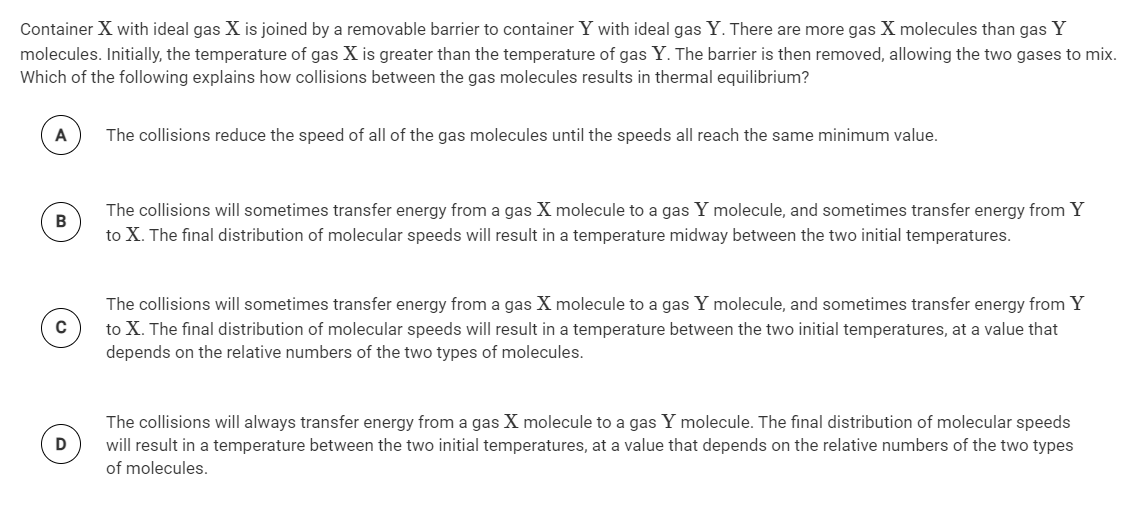Container X with ideal gas X is joined by a removable barrier to container Y with ideal gas Y. There are more gas X molecules than gas Y molecules. Initially, the temperature of gas X is greater than the temperature of gas Y. The barrier is then removed, allowing the two gases to mix. Which of the following explains how collisions between the gas molecules results in thermal equilibrium? A The collisions reduce the speed of all of the gas molecules until the speeds all reach the same minimum value. The collisions will sometimes transfer energy from a gas X molecule to a gas Y molecule, and sometimes transfer energy from Y to X. The final distribution of molecular speeds will result in a temperature midway between the two initial temperatures. The collisions will sometimes transfer energy from a gas X molecule to a gas Y molecule, and sometimes transfer energy from Y to X. The final distribution of molecular speeds will result in a temperature between the two initial temperatures, at a value that depends on the relative numbers of the two types of molecules.
Thermochemistry
Thermochemistry can be considered as a branch of thermodynamics that deals with the connections between warmth, work, and various types of energy, formed because of different synthetic and actual cycles. Thermochemistry describes the energy changes that occur as a result of reactions or chemical changes in a substance.
Exergonic Reaction
The term exergonic is derived from the Greek word in which ‘ergon’ means work and exergonic means ‘work outside’. Exergonic reactions releases work energy. Exergonic reactions are different from exothermic reactions, the one that releases only heat energy during the course of the reaction. So, exothermic reaction is one type of exergonic reaction. Exergonic reaction releases work energy in different forms like heat, light or sound. For example, a glow stick releases light making that an exergonic reaction and not an exothermic reaction since no heat is released. Even endothermic reactions at very high temperature are exergonic.

Trending now
This is a popular solution!
Step by step
Solved in 2 steps









